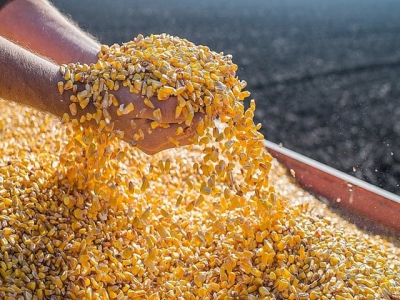Livestock industry concerned about increasing price of animal feed

Since the beginning of the year, the price of animal feed ingredients has increased, leading to a very high increase in the price of mixed feed and the trend is continuing. These are the major challenges for the livestock industry during the second half of 2021, affecting the repopulation, especially making it difficult for smallhold farmers.
In the first months of 2021, the average price of animal feed ingredients increased by 16-46% compared to the same period in 2020, in which the strongest increase was for cereal materials. Source: Internet
According to data from the General Department of Customs (Ministry of Finance), in the first nine months of 2021, the import turnover of livestock products is estimated at over US$2.7 billion, up 1.3% over the same period last year.
Regarding animal feed ingredients, speaking at the National Online Conference on "Developing livestock in the last months of 2021 and implementing the plan for 2022" which took place on the morning of October 8, 2021, the Deputy Director of the Bureau of Livestock Production (Ministry of Agriculture and Rural Development) said that in the first eight months of 2021, imports of animal feed materials were about 14.45 million tons (including aquatic feed materials), corresponding to US$5.22 billion, up 24.3% in quantity and 47.4% in value over the same period in 2020.
Notably, in the first months of 2021, the average price of animal feed ingredients increased compared to the same period in 2020, increasing by 16-46%, of which the strongest increase was ingredients in the cereal group.
The leader of the Bureau of Livestock Production explained that the price of cereals has increased in the world market due to high production costs and climate change affecting crops. Large investment funds turned to speculating on agricultural products and China increased the purchase of cereals for domestic production and livestock.
“Notably, due to the impact of the Covid-19 pandemic, transportation costs increased due to the lack of ships and containers to transport goods in general, including animal feed (average transportation costs increased by 200-300% compared to normal)," Mr. Trong said.
The increase in the price of raw materials for animal feed led to a large increase in the price of mixed feed.
From a local perspective, Ms. Hoang Thi To Nga, Deputy Director of the Department of Agriculture and Rural Development of Nam Dinh province, said that in the future, it was necessary to create conditions for debt rescheduling, continue to lend to enterprises and farmers for herd repopulation when the price of pigs was falling and the price of animal feed was increasing.
Specifically, Ms. Nga proposed to have a credit policy for breeders, especially reducing interest rates so that enterprises could build cold storage facilities and stockpile livestock when prices were very low. With the problem of high prices of animal feed, it was necessary to have solutions to manage and stabilize the price of animal feed and reduce production costs.
Commenting that livestock had room to promote to contribute to the overall growth of the agricultural sector this year, Deputy Minister of Agriculture and Rural Development Phung Duc Tien said that to reduce pressure on high prices of feed and input materials, it was necessary to increase the maximum use of domestic raw materials.
It was necessary to raise livestock in a linked chain to save production inputs and reduce product costs; forecast about supply and demand in regions, especially in the last months of the year and during the Lunar New Year when the Covid-19 pandemic would be under control, demand would increase again.
The Ministry of Agriculture and Rural Development fully reported to the Government to have a system of solutions, remove difficulties in circulation, ensure the supply of products to meet domestic demand as well as exports.
“The ministry has proposed the Government assign the Ministry of Industry and Trade and the Ministry of Transport to consider water transport to reduce input costs; request the Ministry of Finance to submit to the Government to reduce import tax on some input materials,” said Deputy Minister Phung Duc Tien.
Compared to August 2021, in September, prices of most feed ingredients increased.
Specifically, wheat bran VND7,237.5 per kg (up 3.6%); rice bran extraction VND5,283.3 per kg (up 3.3%); corn kernels VND7,937.5 per kg (up 0.5%); soybean meal VND12,337.5 per kg (up 0.6%); fish meal VND27,950 per kg (up 0.5%); Lysine HCl VND33,185.8 per kg (up 0.6%); Methionine VND61,190.3 per kg (up 0.7%). Particularly, the price of DDGS decreased by 1.4% (VND8,500 per kg).
The price of finished animal feed continued to increase slightly compared to August 2021. Specifically, complete compound feed for 60 kg pigs to slaughter VND12,177.5 per kg (up 1.2%); mixed feed for white broiler chickens VND12,752.8 per kg (up 1.2%); mixed feed for colored broilers VND12,014.8 per kg (up 1.3%).
Có thể bạn quan tâm
 Appropriate policies needed to boost agricultural by-product efficiency
Appropriate policies needed to boost agricultural by-product efficiency About 157 million tonnes of agricultural by-products are churned out throughout Vietnam annually, most of which are burned or discharged into the environment
 Conquer the European fruits and vegetables market
Conquer the European fruits and vegetables market Ambassadors can also connect to help businesses importing advanced technologies and equipment for processing and preserving fruits and vegetables
 Reduce 50% of inorganic fertilizers: yes or no
Reduce 50% of inorganic fertilizers: yes or no Many experts believe that the reduction of inorganic fertilizer by 50% can still ensure rice yield if following the strict fertilization process.